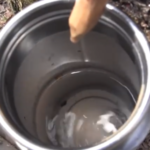The Health Risks of Valley Fever

Valley fever is a common occurrence in the Southwestern desert areas of the United States. Each year, tens of thousands of people are impacted by this condition as dust and particles from the ground get inhaled into the lungs. Let’s take a look at some of the risks, treatment options and ways to prevent becoming impaired by this condition if you are going to be in this part of the country.
What is Valley Fever?
Technically, valley fever is caused by inhaling a fungus that can cause a respiratory infection. However, the term has been loosely applied to cover a host of respiratory ailments that stem from breathing in fine particles, dust and debris in arid areas. The fungus is found in soil, and is easily spread when the ground is cracked or parched. It gets released into the air and blows with the wind.
Symptoms

Symptoms of normal exposure include coughing, irritation of the respiratory tract, the development of a rash, or feeling like you have a cold or the flu. Most people will recover without any treatment as the defense systems in the body expel the fungus. However, those who have suppressed immune systems or an allergy to this fungus can experience serious effects that can lead to chronic respiratory problems or even death.
It is common for outbreaks to reoccur in people who are not able to fight the infection on their own. Advanced symptoms can include persistent low-grade fever, chest pains, sputum with blood, weakness, lesions in the skull or along bones and nodules in the lungs. Joint inflammation and chronic pain, weight loss and even meningitis are common in those who have advanced infections.
Treatment
Most symptoms disappear within a couple of weeks on their own. However, if the infection takes hold, there are a number of anti-fungal treatments that are prescribed. Treatment for severe infections will depend on the extent of the condition, an evaluation of any other immune-suppressing diseases and other contributing factors.
Early intervention is key when dealing with a severe reaction to valley fever. If you suspect that exposure to valley fever is causing these or other chronic respiratory problems, seek medical attention as quickly as possible.
Prevention

The best way to prevent exposure to this fungus or other irritants that can become lodged deep in the respiratory system is to stay indoors on windy days. You also want to minimize exposure to dry dirt that produces dust when working outdoors. Finally, wearing a bandanna or face mask can significantly reduce the chances of inhaling particles that can lead to respiratory problems.
Keep in mind that the desert floor, especially in populated areas, is a breeding ground for exposure to a wide range of contaminants. This is partly due to the fact that rain water does not carry surface contaminants away on a regular basis. The lack of moisture also prevents harmful substances from adhering to the ground. Finally, arid conditions makes it easy for particles to be lifted off of the surface and transported into the ambient air.
Respiratory ailments and valley fever are most common in populated areas on windy days or the moments that lead up to seasonal storms. Avoid being outdoors when these conditions are present, and make sure to use face protection if you are exposed in order to minimize risk.














